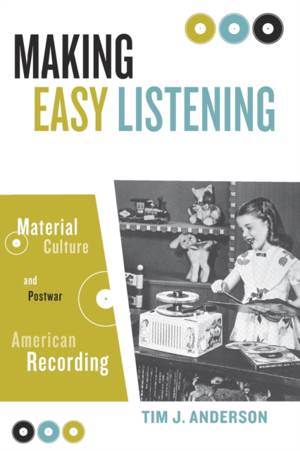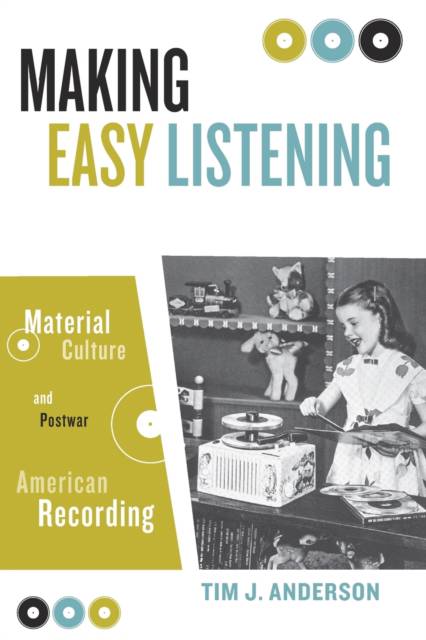
- Afhalen na 1 uur in een winkel met voorraad
- Gratis thuislevering in België vanaf € 30
- Ruim aanbod met 7 miljoen producten
- Afhalen na 1 uur in een winkel met voorraad
- Gratis thuislevering in België vanaf € 30
- Ruim aanbod met 7 miljoen producten
Zoeken
Making Easy Listening
Material Culture and Postwar American Recording
Tim Anderson
Paperback | Engels
€ 32,45
+ 64 punten
Omschrijving
The period between the Second World War and the mid-1960s saw the American music industry engaged in a fundamental transformation in how music was produced and experienced. Tim Anderson analyzes three sites of this music revolution: the change from a business centered around live performances to one based on selling records, the custom of simultaneously bringing out multiple versions of the same song, and the arrival of in-home high-fidelity stereo systems. Making Easy Listening presents a social and cultural history of the contentious, diverse, and experimental culture of musical production and enjoyment that aims to understand how recording technologies fit into and influence musicians', as well as listeners', lives. With attention to the details of what it means to play a particular record in a distinct cultural context, Anderson connects neglected genres of the musical canon--classical and easy listening music, Broadway musicals, and sound effects records--with the development of sound aesthetics and technical music practices that leave an indelible imprint on individuals. Tracing the countless impacts that this period of innovation exacted on the mass media, Anderson reveals how an examination of this historical era--and recorded music as an object--furthers a deeper understanding of the present-day American music industry. Tim J. Anderson is assistant professor of communication at Denison University.
Specificaties
Betrokkenen
- Auteur(s):
- Uitgeverij:
Inhoud
- Aantal bladzijden:
- 296
- Taal:
- Engels
Eigenschappen
- Productcode (EAN):
- 9780816645183
- Verschijningsdatum:
- 1/12/2005
- Uitvoering:
- Paperback
- Formaat:
- Trade paperback (VS)
- Afmetingen:
- 153 mm x 227 mm
- Gewicht:
- 376 g

Alleen bij Standaard Boekhandel
+ 64 punten op je klantenkaart van Standaard Boekhandel
Beoordelingen
We publiceren alleen reviews die voldoen aan de voorwaarden voor reviews. Bekijk onze voorwaarden voor reviews.













